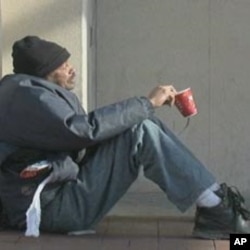Street Sense is one of about 20 publications in the United States which focuses on the homeless - and one of about 90 worldwide. It’s a bi-weekly paper, half of which consists of essays and poems written by the homeless themselves.
The office of Street Sense is located in the Church of the Epiphany, in downtown Washington. The paper hits the streets every other Wednesday and echoes the latest of what those who live on the streets have to say.
Of the 14,000 copies printed of each edition, about 10,000 are sold over each two-week period. None of the writers gets paid for their work. The first two pages of each issue are written by staff, interns and volunteers - the rest by the homeless themselves, who contribute such items as poems and essays. Only the two staff members are paid.
Mary Otto, editor of the paper, came to Street Sense from the Washington Post, where she won a year-long Harvard fellowship for writing about the homeless.
“Some people are homeless for a few days and some are homeless for most of their lives,” she says.
In many cases, Otto says, severe mental disorders prevent the homeless from seeking shelter or being close to other people. Some are fearful of others, and some hear strange voices that make them cautious about getting close to others.
Street Sense’s vendors, though - while mostly homeless - are able to interact with the public. They go through a training course, at the end of which they are given 10 papers to sell. Once they have sold their free copies, they can start buying the paper for 35 cents and selling it for a dollar.
Lisa Gillespie, the paper’s managing editor, says Street Sense plays a role in homeless people’s lives that other media can not. “The mainstream media does not usually cover poverty or homelessness too much, unless someone dies or there's a big rally or something.”









